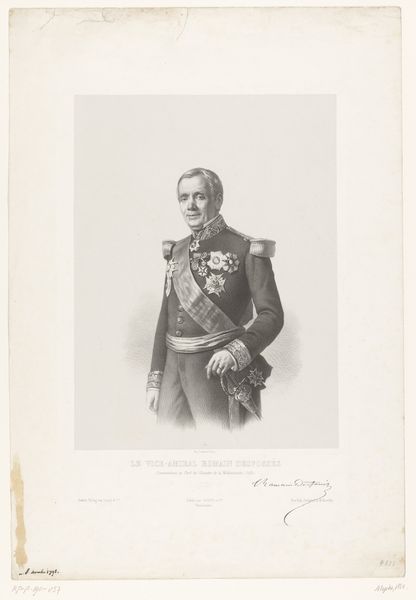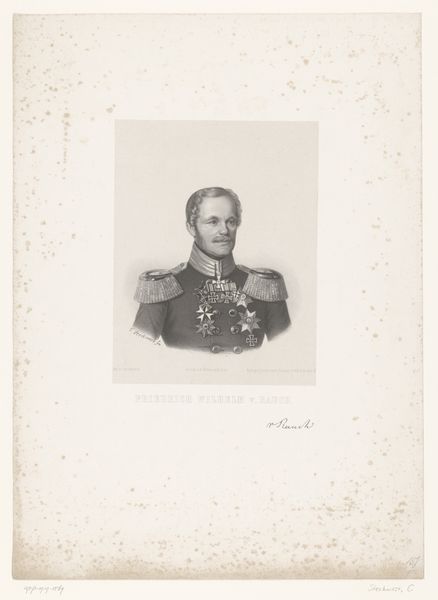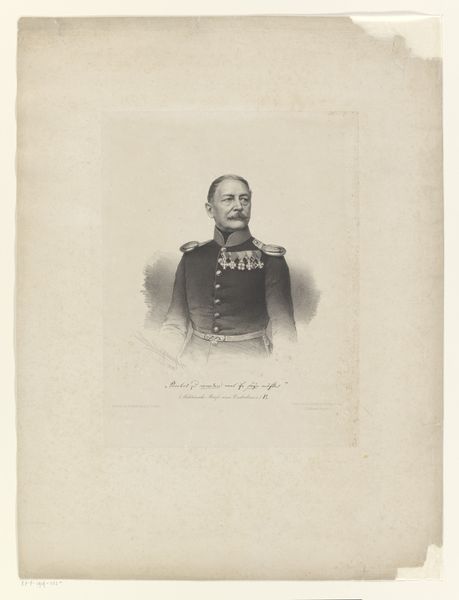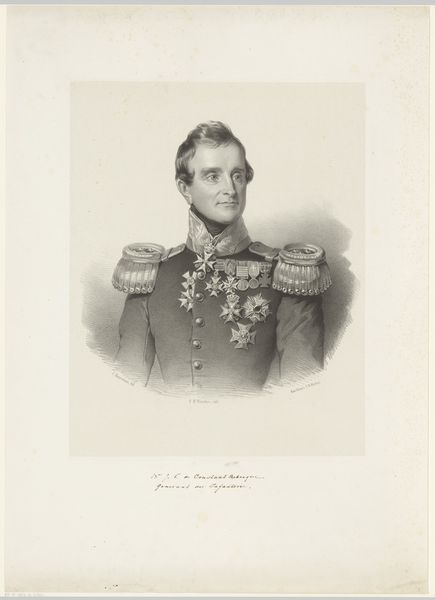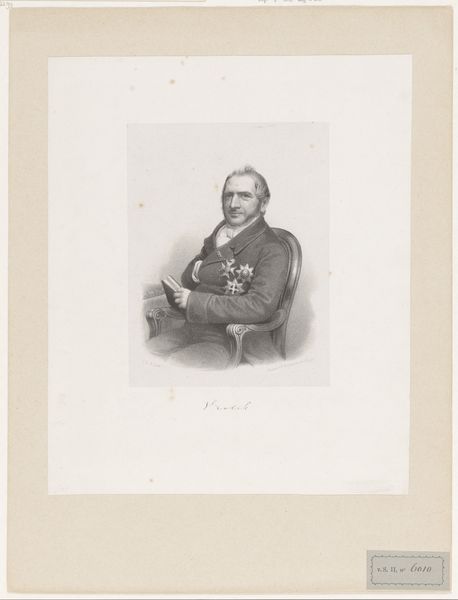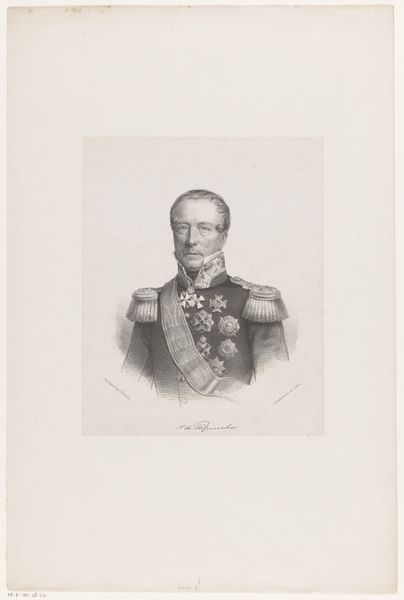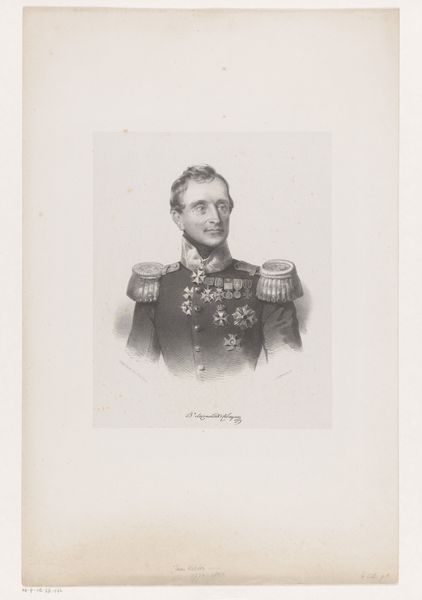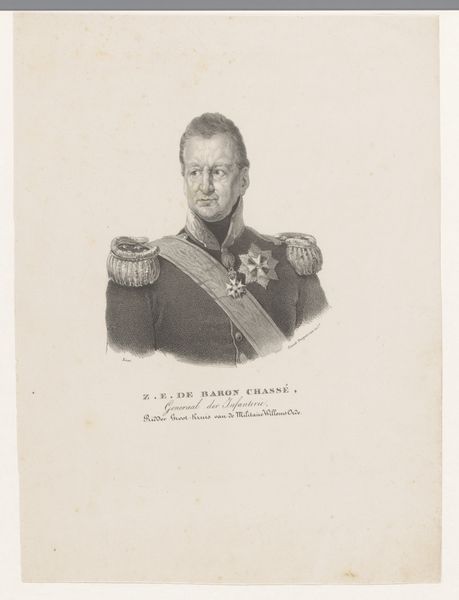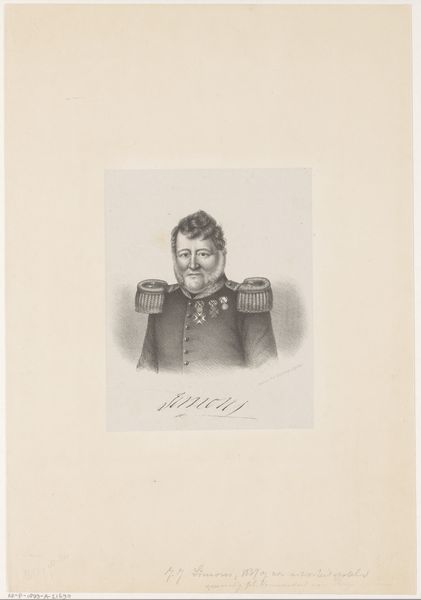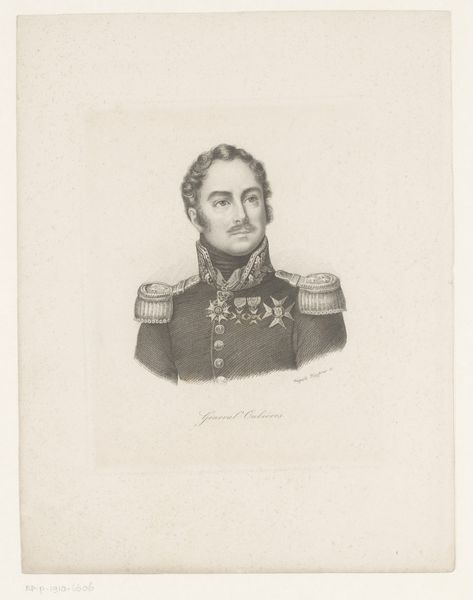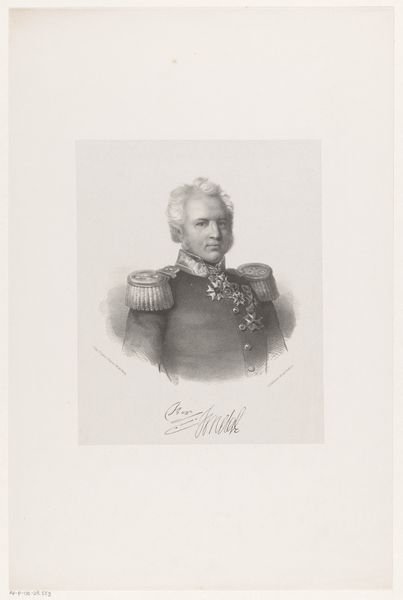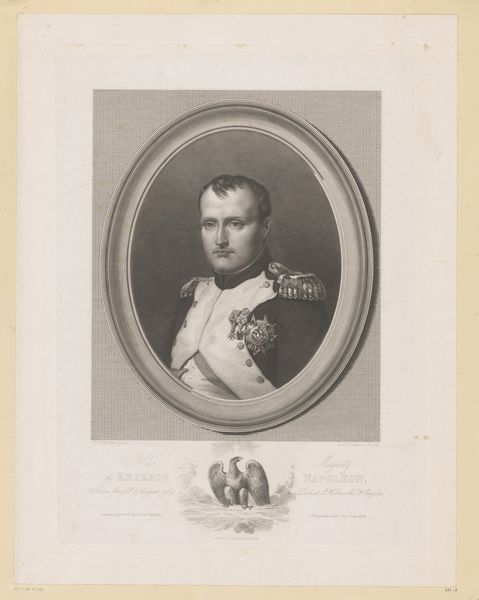
engraving
#
portrait
#
neoclacissism
#
history-painting
#
academic-art
#
engraving
#
realism
Dimensions: height 245 mm, width 160 mm, height 345 mm, width 245 mm
Copyright: Rijks Museum: Open Domain
Editor: This is a portrait of Ferdinand Jacobus du Moulin, an engraving made sometime between 1836 and 1861 by Joannes Ferdinandus Demelinne. I’m immediately struck by the sitter's confident gaze and all the medals. How do we place a work like this within its historical moment? Curator: It's crucial to consider the social function of portraiture at that time. This work reflects the visual language of power and status, meticulously constructed for public consumption. Notice the military garb and prominent display of medals. What does that communicate about Du Moulin's role in society and perhaps the sitter's desires about the image he wants to put forward? Editor: It suggests he's a person of significant importance, closely linked to military achievements. Would this have been commissioned to reinforce his position? Curator: Precisely! During this period, portraiture of public figures played a key role in nation-building and solidifying societal hierarchies. This image likely circulated through print culture, newspapers and journals and helped disseminate a specific idea of leadership and the military. The very act of engraving itself makes it widely available to the public and suggests how widely it's expected that he should be known and honored. How do you see it fitting with the Neoclassical movement listed in the metadata? Editor: I see the influence of Neoclassicism in its clear lines, idealized depiction, and overall formality – aligning with the movement's focus on order and reason, also prevalent during this period's imagery for political leaders, and history painting which we see flagged. But I wonder if a modern-day observer questions this kind of formal presentation. Curator: Absolutely, our contemporary lens is shaped by different expectations of authenticity and representation. We tend to question displays of power and constructed identities. Examining this work invites reflection on the historical forces that shaped its creation, circulation, and how those forces continue to impact us today. Editor: Thinking about the role of the print, who saw this, and what statement it made – brings a completely new perspective for me. Thanks!
Comments
No comments
Be the first to comment and join the conversation on the ultimate creative platform.
